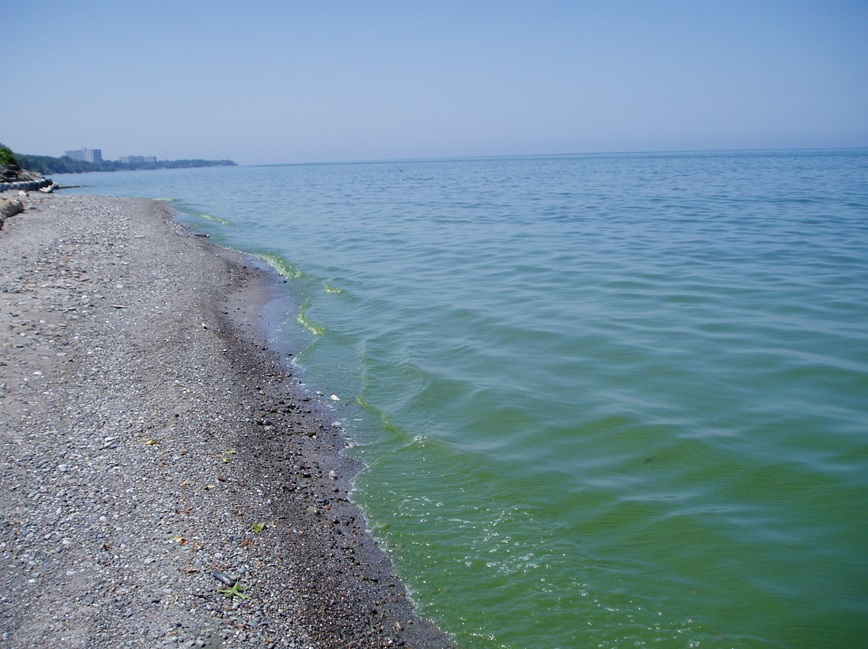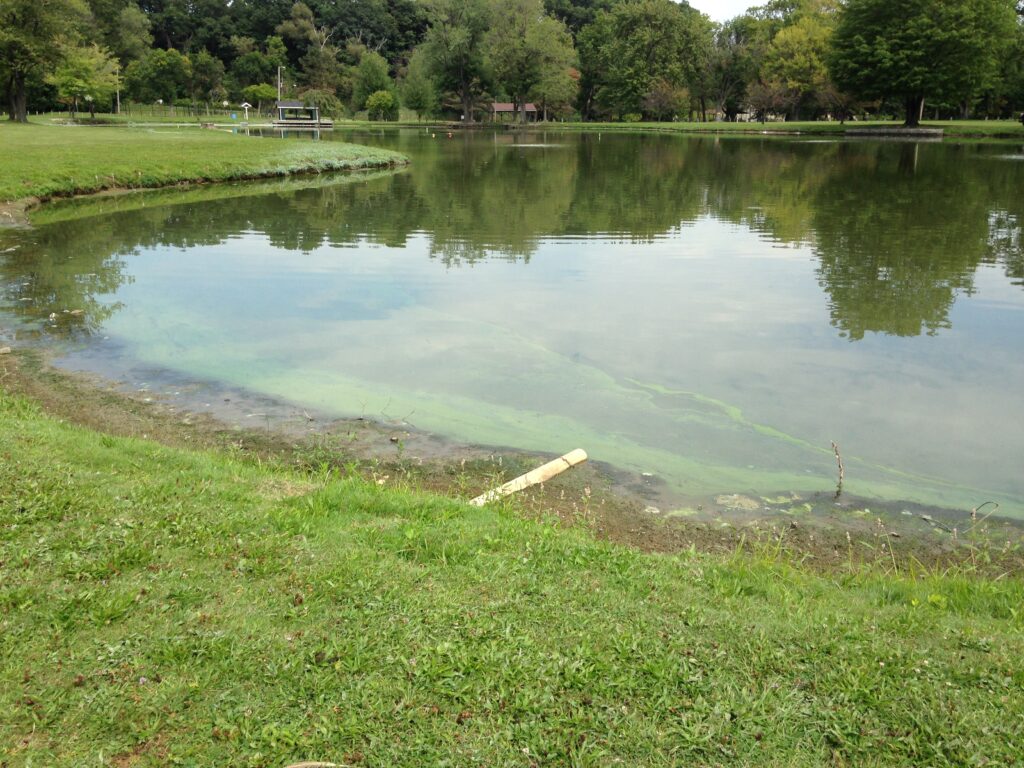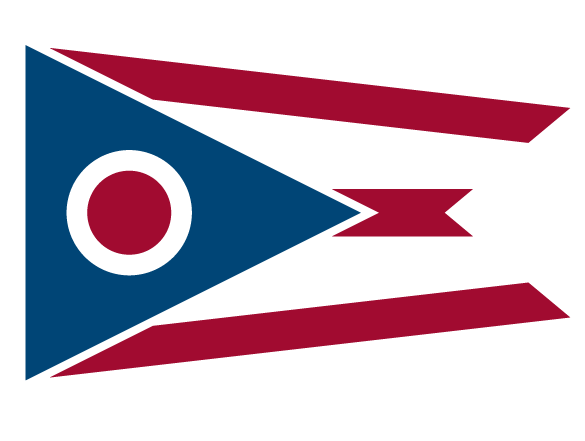Harmful Algal Bloom (HAB)

What is a HAB?
Have you heard of the Harmful Algal Bloom (HAB) in Lake Erie? The HAB, caused by cyanobacteria, turns the lake to the color of pea-green soup. The bloom often appears first in the western basin of Lake Erie, where the water is shallow and warm. If the weather, water temperature, and amount of nutrients are just right elsewhere in the lake, the bloom can appear. The algal bloom can be harmful to your health if you swim in or ingest the water. Boating or jet skiing through a bloom can aerosolize the toxins and they can be inhaled, causing sickness. If exposed to the toxins, symptoms may include diarrhea, vomiting, abdominal pain, kidney toxicity, hives, weakness, allergies, sore throat, numbness, dizziness, difficulty breathing, rashes, and a runny nose. Often times a HAB can be found in smaller inland waters and can still be dangerous to your health. Not only should you stay out of the water if a bloom is present, but also keep pets from swimming to prevent sickness.
Various local colleges and agencies monitor the lake conditions and nutrients entering Lake Erie to predict when a HAB may occur and how large and where the bloom may be. A predictive model is done by NOAA and can be found at Lake Erie HAB Forecast. For more information on how a bloom could effect your health, visit the Ohio Department of Health’s web page. If you think a bloom might be present in Lake Erie or a different inland water, you can report the bloom to Ohio EPA.
Did you know that you can help prevent the HAB this summer? The cyanobacteria feed off nutrients in the water, specifically phosphorus. The nutrients wash into the lake from fertilizer, sewage, pet waste, and yard waste. Remember, anything that flows into a storm drain will flow directly to Lake Erie, untreated!
The following tips will help keep nutrients out of Lake Erie and help to prevent a HAB:
- Properly dispose of any leaves, branches, and grass clippings. Never dump yard waste at the banks of streams or in a storm drain.
- The best time to fertilize your lawn is in the fall. If you do fertilize, only use the necessary amount and apply it according to the instructions on the label. Sweep up any fertilizer that lands on the driveway, sidewalk, or roadway.
- Ensure all your household wastewater plumbing is properly connected to your septic system or the sanitary sewer. If you have a septic system, ensure that it is functioning properly and not discharging sewage to the surface of the ground or a nearby waterway.
- Pick up after your pets frequently and discard pet waste in the trash.
We can all do our part to prevent a HAB in Lake Erie and protect this great resource.

A potential HAB should be reported to Ohio EPA. For more information, visit their website or click here.
